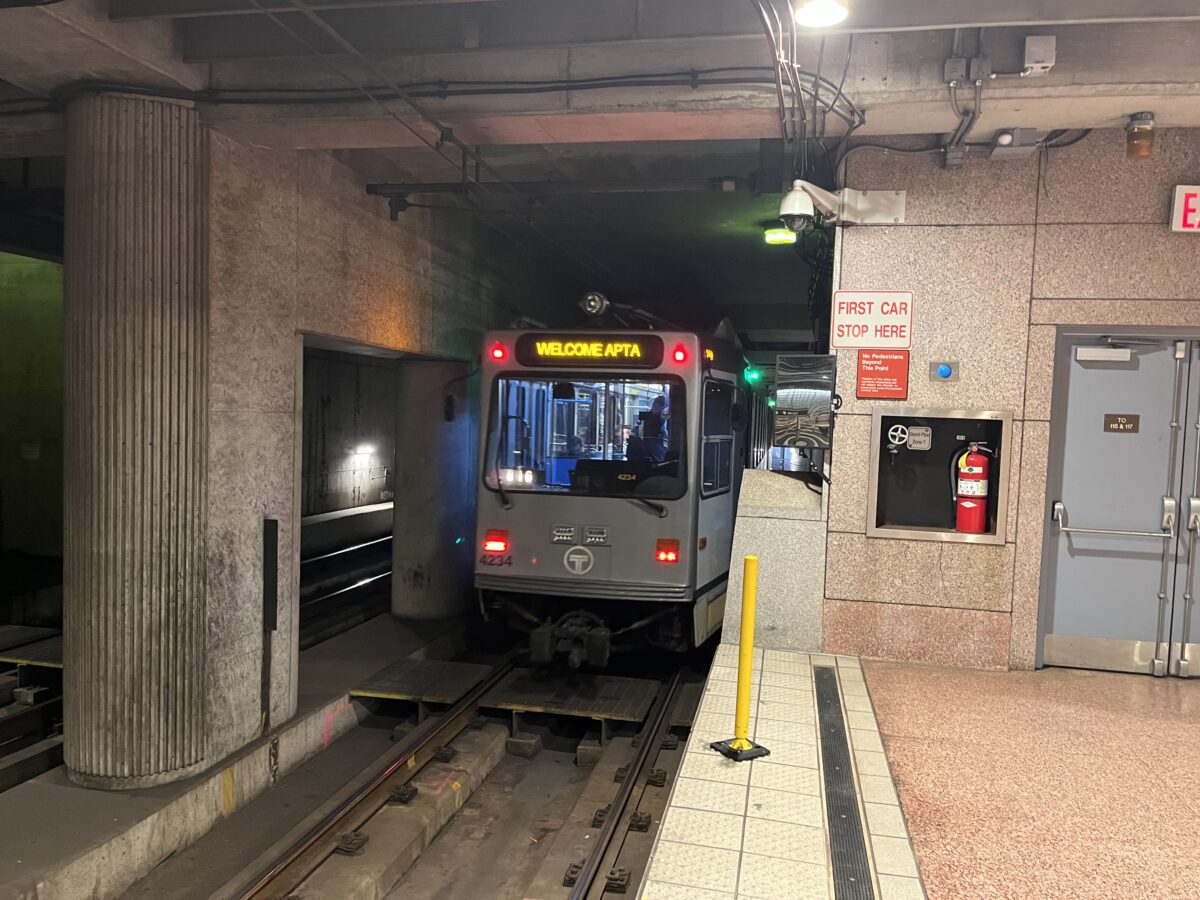Pittsburgh Regional Transit will be able to get advice from about 1,300 rail transit officials this week about rebuilding rail ridership and finding operators and maintenance personnel.
The officials will talk about those issues and more during the American Public Transportation Association’s annual rail conference Sunday through Wednesday at the David L. Lawrence Convention Center, Downtown. During the event, visitors will get to tour PRT maintenance operations, the light rail system and inclines, and the Pennsylvania Trolley Museum in Chartiers, Washington County, what Pittsburgh Regional CEO Katharine Eagan Kelleman called “a unique experience.”
“I get to be a big Pittsburgh booster, which I always like to do,” said Kelleman. “We were in San Diego last year, which has a newer system. We have an older system here, so we have a lot of history to talk about.”
But the conference also has a business side, said Art Guzzetti, a Pittsburgh resident and former PRT employee who now serves as vice president of policy and mobility for APTA. He said he believes the visitors are eager to share ideas on how to handle their common problems dealing with transit life after the pandemic.
“Everybody is pretty much dealing with the same things,” he said.
Prime among those issues are rebuilding rail ridership and maintaining enough employees to run the system. At PRT, for example, light rail ridership remains at 54% below pre-pandemic levels and the agency’s chronic problems hiring operators was exacerbated last year when 48 were fired for refusing to follow the agency’s mandate to be vaccinated against the COVID-19 virus.
Guzzetti said he believes part of the issue is that in many cities buses serve neighborhoods where residents depend on them while residents in neighborhoods with rail service often have options such as their own automobile. In many ways, he said, the pandemic and its aftermath have given transit systems a clearer idea of which communities really need their service and provided strong clues how to better deploy service in the future.
In Philadelphia, for example, the Southeastern Pennsylvania Transportation Authority is switching its rail emphasis from providing strong rush-hour commuter service to regional service at other times of the day.
Guzzetti acknowledged the nationwide hiring problem, but he said he believes those two areas are tied together by the same issue: lack of affordable housing. Transit needs to do a better job of developing affordable housing around transit stops for light rail and buses, both to attract riders and have places where employees can live.
“In some areas, the people we want to hire can’t afford to live in the community where they work,” he said. “I think affordable housing is an answer to our problems.”
Pittsburgh Regional is designing transit-oriented development at a number of sites, including South Hills Junction and Dormont, both stops on the light rail system.
Another common theme at the conference will be the best use of billions in transportation funds available through the Biden administration’s stimulus program. The funds come at a time of high inflation and supply-chain problems, but Guzzetti said he was impressed that within the past year rail expansions in Los Angeles, Washington, D.C., and San Francisco finished on time and on budget.
“There has never been a year like 2022,” he said. “It’s pretty amazing to have those projects coming in on time and on budget in this environment. That’s a good sign for the stimulus money.”
Another positive about these types of events, Kelleman said, is everyone’s willingness to share.
“We get to talk to our peers,” she said. “Somebody can show up with a great idea or program and everybody can adopt it.”
Ed covers transportation at the Pittsburgh Post-Gazette, but he's currently on strike. Email him at eblazina@unionprogress.com.



